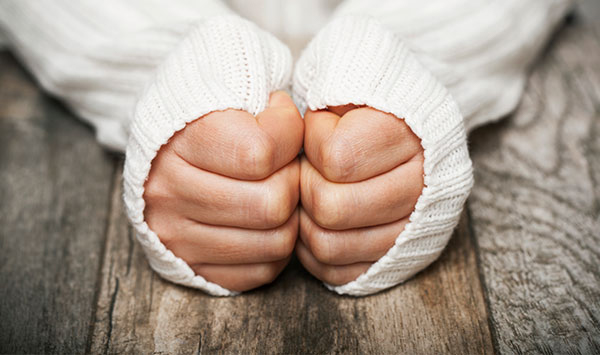Raynaud’s disease is a condition that causes a person’s blood vessels to narrow when they’re exposed to changes in temperature. It can affect the fingers and toes, but it most often affects just one finger at a time and is therefore sometimes called “the painless ailment.” Raynaud’s can also be associated with other conditions, including scleroderma, lupus, and rheumatoid arthritis.
Drinking something warm is one symptom of Raynaud’s, a condition that causes a person’s blood vessels to narrow when they’re exposed to changes in temperature.
Drinking something warm is one symptom of Raynaud’s. It can help the blood vessels to open up again and restore normal circulation.
It’s also called Raynaud’s phenomenon and is not dangerous, but it can be painful.
Raynaud affects both men and women.
- Women are more likely to be diagnosed with Raynaud’s.
- Men are more likely to have secondary Raynaud’s. This means that their condition is caused by another condition, such as a thyroid problem or scleroderma.
- Men are also more likely to develop primary Raynaud’s, which means that it occurs for no known reason.
Raynaud’s is caused by spasms in the blood vessels.
Raynaud’s is an umbrella term used to describe a condition that affects the blood vessels in the hands and feet. It causes them to go into spasm, which decreases blood flow to the extremities.
If you have Raynaud’s, your hands and feet will feel cold or numb when they come in contact with cool or cold temperatures. The color of your skin will also change from white (or pale) to blue or red, depending on where you are experiencing symptoms.
The most common type of Raynaud’s occurs on its own and isn’t associated with any other conditions. It’s called primary Raynaud’s.
Primary Raynaud’s is the most common type of Raynaud’s, accounting for 80% of all cases. It doesn’t have any other conditions associated with it.
Secondary Raynaud’s is less common, but still affects around 10% of people who have the condition. This type can be caused by a number of different things, including:
- Autoimmune diseases like rheumatoid arthritis and lupus
- Certain medications such as birth control pills and beta blockers (used to treat high blood pressure)
- Disease or injury in a part of your body that runs through your nervous system (such as carpal tunnel syndrome)
The incidence of primary Raynaud’s is higher in certain regions of the country.
You may want to pay attention to your geographic location.
The incidence of primary Raynaud’s is higher in certain regions of the country. In a study from the Mayo Clinic, it was found that women were more likely than men to develop primary Raynaud’s and that people who live in colder climates (think Alaska) were more likely to be diagnosed with primary Raynaud’s than those who reside in warmer states (think Hawaii).
Family history plays a role in who may develop primary Raynaud’s disease.
One of the first things to know about primary Raynaud’s disease is that it has a genetic component. This means that if you have a family history of Raynaud’s, you’re more likely to develop the condition yourself. “Many people have it in their families,” says Dr. Bradley Lewis, a dermatologist at Johns Hopkins Hospital in Baltimore who specializes in integrative medicine and rheumatology and treats patients with primary Raynaud’s disease or secondary Raynaud’s symptoms (such as white finger).
If you want to be tested for hereditary factors that increase your risk for developing primary Raynaud’s disease, ask your doctor about getting an A4V mutation test for HLA-DRB1*04:01 gene mutations—and if there are any strong family members who have a history of this condition or other autoimmune diseases such as lupus or Sjögren’s syndrome.
Primary Raynaud’s can cause numbness and tingling in the fingers when exposed to cold temperatures or stress.
Raynaud’s is a condition that causes your blood vessels to narrow when you are exposed to changes in temperature. The symptoms of Raynaud’s most commonly affect your fingers, but they can also affect other areas like the nose or toes.
Primary Raynaud’s occurs when no underlying medical reason has been found for the symptoms. This type of Raynaud’s usually develops during teenage years or young adulthood and affects women more than men.
If you have primary Raynaud’s, sudden exposure to cold can cause your fingers and toes to feel numb, tingly or painful (tingling is another name for numbness). Some people might even lose feeling completely until they warm up again (this is called “white finger”). In addition to cold weather, stress from exercise or certain medications such as birth control pills may trigger an attack as well.*
Raynaud’s can also occur alongside other diseases, including scleroderma, lupus, and rheumatoid arthritis. This is called secondary Raynaud’s.
- Secondary Raynaud’s can occur alongside other diseases, including scleroderma, lupus, and rheumatoid arthritis.
- It is more severe than primary Raynaud’s.
- It can cause pain and ulcers on the fingers.
Secondary Raynaud often has more severe symptoms than primary Raynaud’s, including pain and ulcers on the fingers.
Secondary Raynaud’s is often more severe than primary Raynaud’s and can cause pain, ulcers, or color changes on the fingers. This is because secondary Raynaud’s is usually caused by medications or occupations that stress your body.
If you have secondary Raynaud’s, you may also have symptoms like:
- Pain in your hands and fingers
- Changes in skin color (usually white, blue)
- Skin ulcers on the tips of your fingers
Certain medications can cause secondary Raynaud’s, including beta blockers and migraine headache medicines that contain ergotamine.
Certain medications can cause secondary Raynaud’s, including beta blockers and migraine headache medicines that contain ergotamine. Other medications known to cause the condition include:
- Antidepressants (like Paxil)
- Antipsychotics (like Zyprexa)
- High blood pressure drugs (like Lisinopril)
- Some cancer treatments
Some occupations are risk factors for developing secondary Raynaud’s, including construction, landscaping and typing at a computer for long periods of time.
Some occupations are risk factors for developing secondary Raynaud’s, including construction, landscaping, and typing at a computer for long periods of time.
It’s important to note that not all occupations will cause you to develop secondary Raynaud’s. However, if you’re working in one of these fields on an extended basis, it’s possible that your work may contribute to the condition. In addition, there are also some things you can do to protect yourself from developing secondary Raynaud’s:
- Work with your employer to find ways to reduce cold exposure in your workplace (for example by providing warm water bottles).
- Ask about any available hand protection like gloves or mitts that can help keep hands warm during colder weather conditions at work sites where this is necessary (e.g., gardening).
Conclusion
If you have Raynaud’s disease, it’s important to understand the symptoms and treatment options. If you think you may be experiencing Raynaud’s, talk to your doctor about the best plan for treating the condition.



